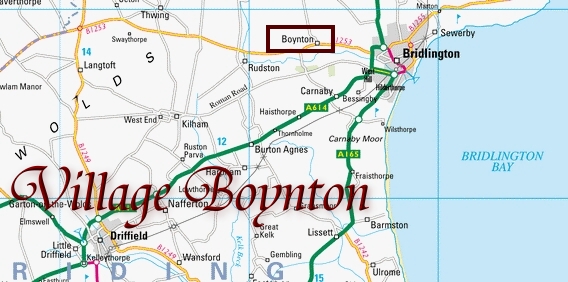
 |
It is what we all share -- a tiny village in the East Riding of Yorkshire. In 1066 it was a village of 100 or so; today it is a village of 100 or so. It draws together all Boyntons -- related through this village even if we cannot trace a fully specified lineage back to 1066.
When William arrived in England the manors at Boynton were held by Torchil and others [A Boynton Story: Torchil de Bovington]. They did not last very long because William divided the land among his followers. The Victoria County History for The East Riding, vol. 2 recounts the history of land holding in the Boynton Parish [Document: The East Riding].
The first Boyntons, the first who took Boynton as their surname, were Walter, Adam and Gilbert. They lived, and we have documents they signed, in the twelveth and early thirteenth centuries [A Boynton Story: The First Boyntons].
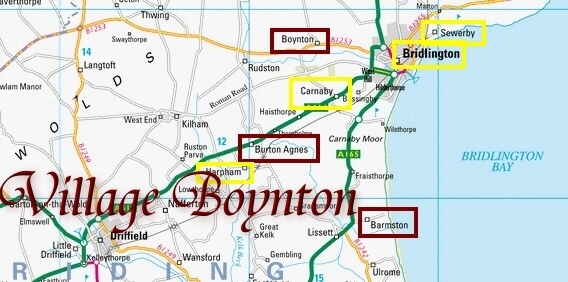 |
Walter, about whom we know the most, was quite active around this area. He worked closely with the Percys of Carnaby, the Harphams of Harpham, the Sewerbys of Sewerby, and the Somervilles of Burton Agnes. All of them were involved in getting the priory at Bridlington off the ground.
Two Boynton families had rather different connections to village Boynton. Ingram, of the Boynton Triangle Boyntons, married Joan de Acklam early in the thirteenth century and moved the center of the family holdings to Acklam. They retained the land they held in Boynton, but it was peripheral to their major holdings. At the end of the fifteenth century they acquired the property at Barmston, which became their new center of holdings, and then in the seventeenth century they acquired Burton Agnes, which became the third center of land holdings for the family [A Boynton Story: Marrying Well]. Robert, who lived in the thirteenth century, is the first Boynton of Boynton about whom we know. His son and sons of his son, etc. held land in Boynton and in the surrounding area. This line of Boyntons ended in the fifteenth century when Elizabeth, the Boynton heir, married Thomas Newport, and that land in Boynton became Newport land.
Boynton is a village nestled in rich farm land. This picture of Boyntons standing at the crossroads dividing north and south also pictures the fields just outside of Boynton.
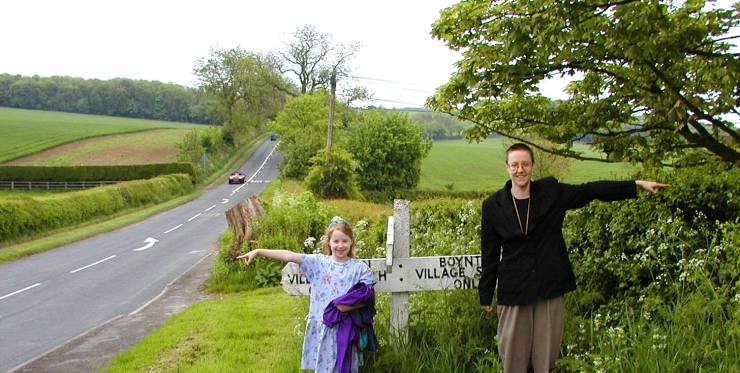 |
Boynton runs north and south with a rather narrow east-west highway cutting through it. The fields are neatly laid out and bounded by hedge fences. Already you know it is rich land; if the fences had been rock that would have been the sign of poor land. The woodlands are scattered through the countryside, but most of the countryside is devoted to agriculture.
Contemporary village Boynton is just that -- contemporary.
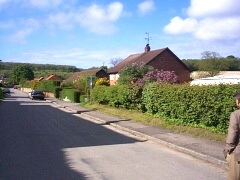 |
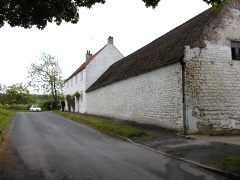 |
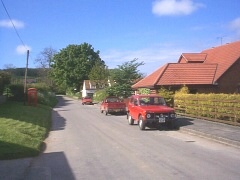 |
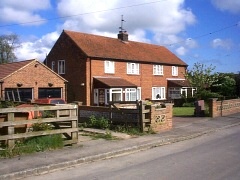 |
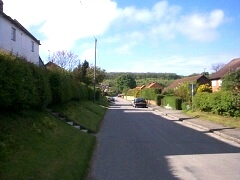 |
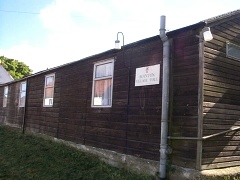 |
It is a long road running north to south with these houses built along the road. There is a village hall -- the bottom right picture -- but there is no grocery, no cinema, no hardware or farming equipment, no stores in the village. Everything that must be purchased must be purchased elsewhere.
The only buildings that are centuries old are at the far south end of the village; they are the manor and the church.
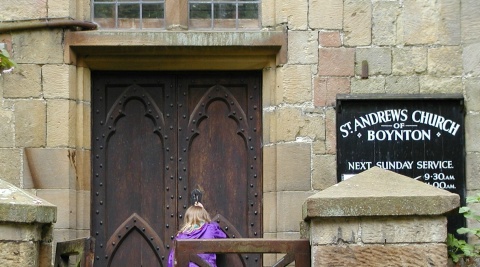 |
|
Click on the image to see more pictures of the church
|
Anna is peeking through the keyhole into the church. Click on the picture if you want to follow her inside.
The Boynton church, St. Andrews, belonged to Bridlington Priory from the twelveth century until the dissolution [Victoria County History, p. 25].
The Boyntons of Boynton were important parishoners. John built a chantry for prayer in 1324. Later Elizabeth Boynton Newport and her husband and her heirs made this the central church in their lives. The tower was added in the fifteenth century.
The medieval church had a tomb for the Newport family. There were also inscriptions indicating some of the Newports who were buried there. These included an inscription for Elizabeth and her husband Thomas. The south window of the church had the coat of arms of the Boyntons of Boynton and also the coat of arms of the Boynton triangle Boyntons. The only available description of the medieval church was by Dodsworth, based on a visit in 1620 [A Boynton Document: Dodsworth].
The Newport heirs of the Boyntons of Boynton and the Boynton triangle Boyntons sold their property to the Stricklands -- beginning in the seventeenth century. By 1685 the church belonged to the Stricklands. However, it was in disrepair, and everything except the tower was torn down in 1767 and replaced by an eighteenth century building. The church history gives a fuller account of the developments at the church over the centuries [A Boynton Document: A Short History].
At the end of the road is Boynton Hall, the manor house.
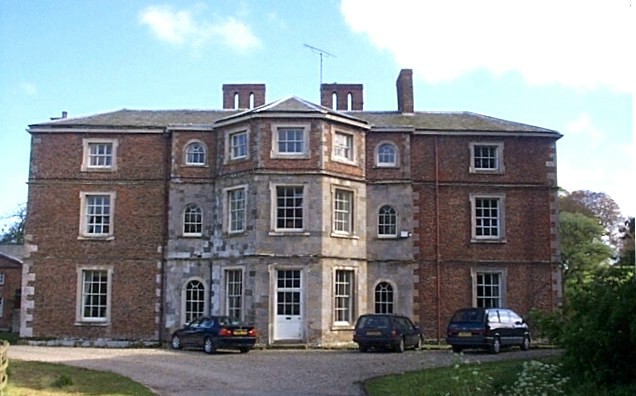 |
The manor house was built by the Stricklands at the end of the sixteenth century and the beginning of the seventeenth century. It was extensively remodeled in the eighteenth century, and it retains that look today.
It is a tiny village: rolling fields and wooded areas; a few houses built along the road; a lovely eighteenth century church; and a 16th-18th century manor house. But it has a very long history --extending back to before the Conqueror took it as his own. And it is the spring of the Boynton family. Boyntons spread from there throughout Yorkshire, but they did not go much farther afield than that -- until they left for the new world.
And all of us who are Boyntons are joined by our connection to this tiny village.
© G. R. Boynton, September, 2002
.....
Pugh, R. B., ed. (1974) The Victoria History of the Counties of England; A History of Yorkshire East Riding, Volume II, The University of London Institute of Historical Research.
 |